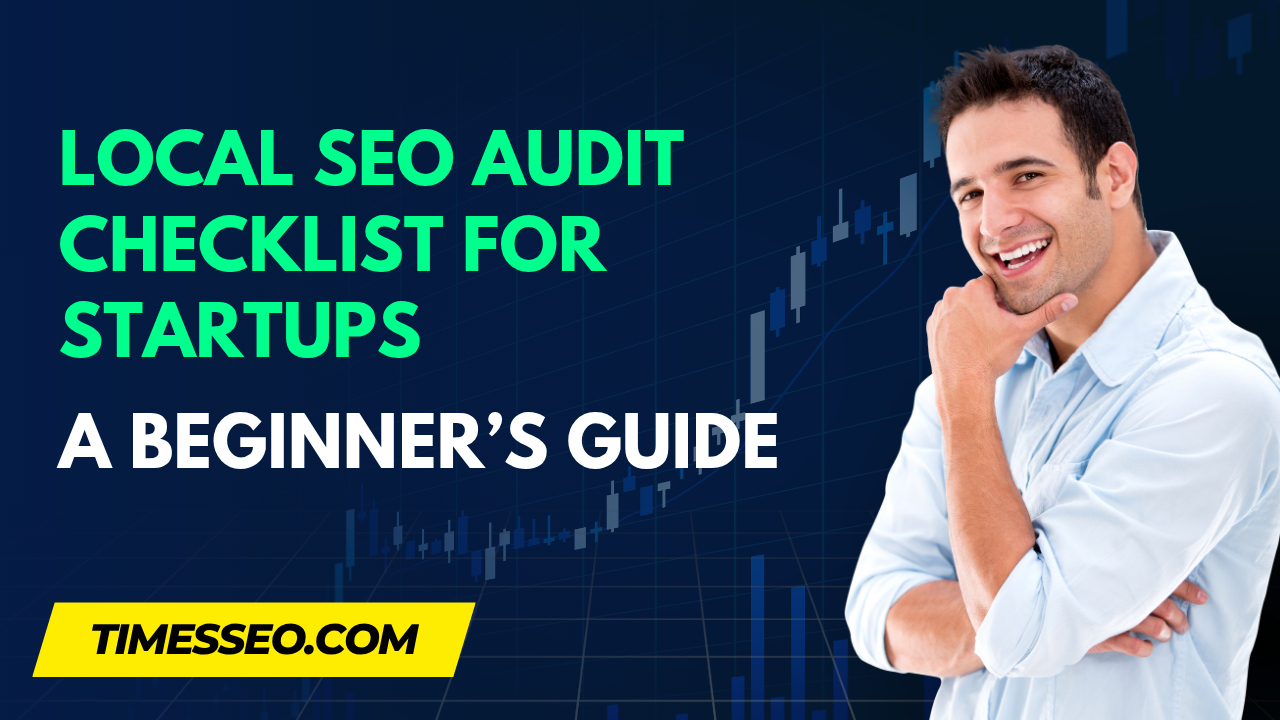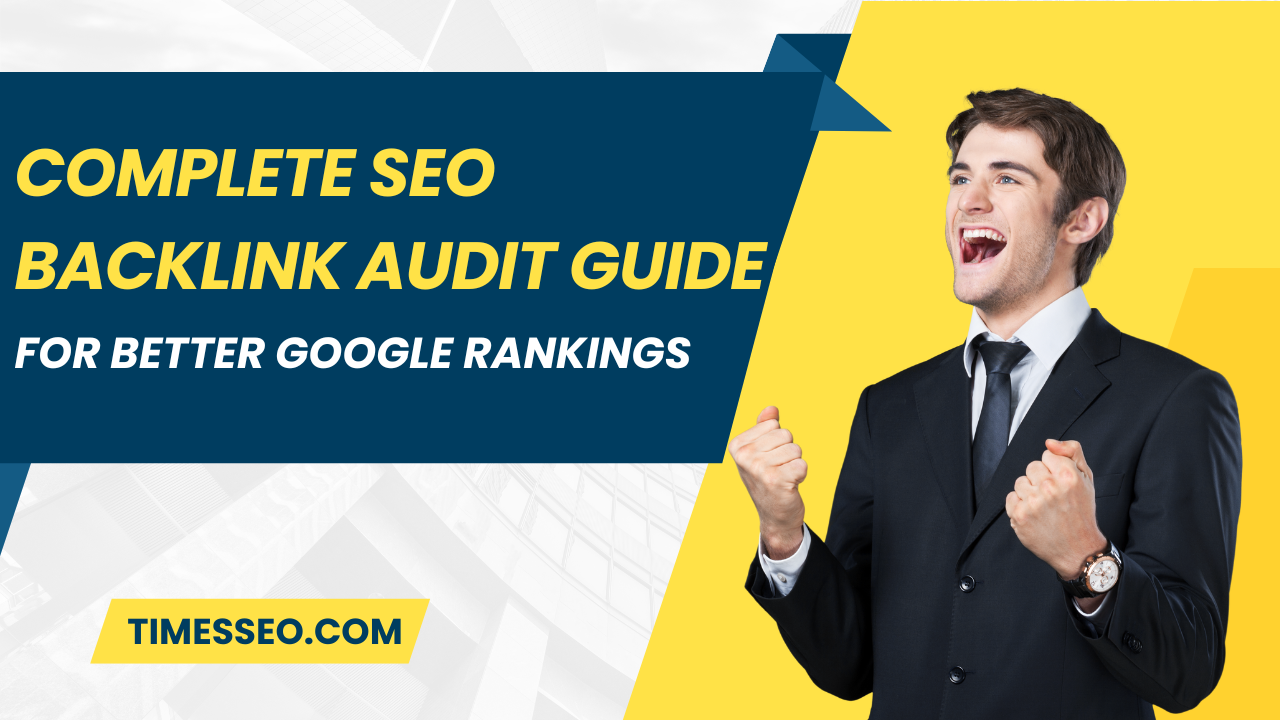
Step-by-Step Ecommerce SEO Audit for Better Sales and Rankings
Make use of our thorough e-commerce SEO audit guide to boost your online store’s performance. Learn how to identify SEO issues, improve Google rankings, and drive more sales with a step-by-step audit process tailored for ecommerce websites. Perfect for small retailers and digital marketers alike.
Table of Contents
Introduction
Why Ecommerce SEO Matters
Imagine this—you’ve got amazing products, an eye-catching design, and smooth checkout. But guess what? None of that counts if search engines don’t find your website. That’s where ecommerce SEO comes in. It ensures your products get discovered by people already looking for them.
How an Audit Boosts Sales and Search Visibility
An SEO audit checks under the hood of your online store to see what’s helping you rank—and what’s holding you back. By fixing the right things, you not only climb higher in Google but also improve the overall shopping experience, which leads to more conversions and sales.
What is an Ecommerce SEO Audit?
About an Ecommerce SEO Audit
An ecommerce SEO audit is a detailed check-up of your website’s SEO health. It analyzes technical issues, content quality, site structure, backlink profile, and more.
Goals of the Audit
- Identify SEO errors or weak points
- Improve site crawlability and indexability
- Boost organic rankings and conversions
- Enhance the user experience across devices
Must-Have Tools for Your Audit
Free Tools
- Google Search Console – Find crawl errors, indexing status, and performance data
- Google Analytics – Analyze user behavior, traffic sources, and conversions
Premium Tools
- Ahrefs or SEMrush – For backlink analysis, keyword audits, and competitor insights
- Screaming Frog SEO Spider – Crawl your site like a search engine
- PageSpeed Insights – Evaluate speed and performance metrics
Step 1 – Technical SEO Check
Site Crawl and Indexability
Use Screaming Frog to crawl your entire site. Check for:
- Broken links (404 errors)
- Redirect loops
- Pages blocked by robots.txt
- Non-indexed product pages
Mobile-Friendliness and Core Web Vitals
Google is mobile-first. Make sure your store loads fast, doesn’t shift content around (CLS), and is interactive quickly (FID).
SSL Security (HTTPS)
If your site isn’t secure, users and Google both lose trust. Use HTTPS everywhere.
Step 2 – URL and Site Structure Audit
SEO-Friendly URLs
Your URLs should be clean and keyword-rich.
Good: example.com/mens-leather-boots
Bad: example.com/product?id=1234
Flat Architecture and Category Hierarchy
All pages should be reachable within 3 clicks. Categories need to make sense and be simple to understand.
Step 3 – On-Page SEO Review
Title Tags, Meta Descriptions, and Headers
Make sure every page has a unique:
- Title tag with main keyword
- Meta description with a CTA
- Proper H1 and supporting H2s for product features
Product Descriptions and Image Optimization
Don’t use manufacturer descriptions. Write your own using target keywords. Use descriptive file names and ALT tags for images.
Schema Markup for Ecommerce
Use JSON-LD schema to help Google understand:
- Product name
- Price
- Availability
- Ratings
Step 4 – Content Quality and Duplicate Issues
Unique Product Content
Avoid copying product descriptions across multiple items. Make each one distinct, helpful, and keyword-rich.
Avoiding Thin or Copied Content
Pages with little or no content hurt rankings. If a product is out of stock or low in content, consider merging it with a related product or using noindex.
Step 5 – Internal Linking and Navigation
Breadcrumbs
Breadcrumbs help users and bots understand site hierarchy.
Example: Home > Men > Footwear > Sneakers
Related Products and Cross-Linking
Add related product links to boost session time, reduce bounce rate, and enhance crawl depth.
Step 6 – Page Speed Optimization
Compress Images and Use Lazy Loading
Reduce image sizes without losing quality. Lazy load images below the fold.
Minimize CSS/JS and Leverage Caching
Use tools like WP Rocket or Cloudflare to remove unnecessary code and cache frequently loaded assets.
Step 7 – Backlink and Off-Page SEO Check
Analyze Backlink Profile
Use Ahrefs or SEMrush to review:
- Referring domains
- Anchor text distribution
- Domain authority
Disavow Toxic Links
Toxic backlinks can drag your rankings down. Disavow links from spammy or irrelevant sites.
Step 8 – Mobile SEO Audit
Mobile Usability Issues
Use the Mobile Usability report in Google Search Console to check for clickable elements, font sizes, and viewport issues.
Mobile Page Load Time
Run your site through PageSpeed Insights on mobile. Optimize for the Core Web Vitals we discussed earlier.
Step 9 – Conversion-Focused Elements
Clear CTAs
Your call-to-action buttons like “Buy Now” or “Add to Cart” should be easy to find and consistent across all devices.
Trust Signals and Reviews
Use badges like “Secure Checkout,” “Money-Back Guarantee,” and highlight customer reviews to build trust.
Step 10 – Local SEO (if applicable)
Google Business Profile
If you sell locally or have a physical store, verify and optimize your Google Business Profile.
Local Keywords
Use keywords like “buy shoes in Delhi” or “organic skincare New York” in relevant product and landing pages.
Creating an SEO Audit Report
Categorize Issues
Split issues into Technical, On-page, and Off-page.
Prioritize Fixes by Impact
Fix high-priority issues first (e.g., broken pages, missing H1s, slow speed).
Measuring SEO Audit Impact
Monitor Organic Traffic
Check if organic traffic increases using Google Analytics or Ahrefs.
Track Conversions and Rankings
Look at keyword position tracking and revenue coming from organic search post-audit.
Common Mistakes to Avoid
Ignoring Mobile Users
More than 60% of shoppers browse on mobile. Categories must be easy to understand and make sense.
Skipping Structured Data
Without schema markup, Google can’t display rich results like star ratings or price.
Poor URL Structure
Messy or long URLs confuse users and search engines alike.
Conclusion
The goal of an e-commerce SEO audit is to improve your shop for your customers, not simply Google. Every fix you make, from optimizing images to improving page speed, leads to a smoother experience and more sales. Don’t wait for your rankings to drop. Audit smart, optimize wisely, and grow consistently
Frequently Asked Questions
A basic audit can take 1–2 days, while a full technical audit with fixes may take up to 2 weeks depending on your site's size.
Not necessarily. Free tools like Google Search Console and Analytics cover the essentials. Paid tools offer deeper insights.
Every 3–6 months, or after major site updates or drops in traffic.
Yes! Better rankings = more visibility. More visibility = more clicks. More clicks = more conversions.
Absolutely. Many tools are beginner-friendly, and you can always start with a basic checklist before diving into deeper fixes.
Table of Contents
Popular Posts
-
 Affordable Technical SEO Audit for Small Business: A Complete Guide26 Jun 2025 Blog
Affordable Technical SEO Audit for Small Business: A Complete Guide26 Jun 2025 Blog -
 How to Get an Affordable Technical SEO Audit for Small Business27 Jun 2025 Blog
How to Get an Affordable Technical SEO Audit for Small Business27 Jun 2025 Blog -
 The Ultimate Local SEO Audit Checklist for Startups28 Jun 2025 Blog
The Ultimate Local SEO Audit Checklist for Startups28 Jun 2025 Blog -
 Local SEO Audit Checklist for Startups: A Beginner’s Guide28 Jun 2025 Blog
Local SEO Audit Checklist for Startups: A Beginner’s Guide28 Jun 2025 Blog -
 Top On-Page SEO Audit Steps for Service Websites Every Business Should Know29 Jun 2025 Blog
Top On-Page SEO Audit Steps for Service Websites Every Business Should Know29 Jun 2025 Blog -
 Technical SEO for WordPress: The Ultimate Beginner’s Guide01 Jul 2025 Blog
Technical SEO for WordPress: The Ultimate Beginner’s Guide01 Jul 2025 Blog -
 The Impact of On-Page SEO Audit Steps for Service Websites on UX01 Jul 2025 Blog
The Impact of On-Page SEO Audit Steps for Service Websites on UX01 Jul 2025 Blog -
 Technical Mobile SEO Audit Tips for Developers02 Jul 2025 Blog
Technical Mobile SEO Audit Tips for Developers02 Jul 2025 Blog -
 Complete SEO Backlink Audit Guide for Better Google Rankings03 Jul 2025 Blog
Complete SEO Backlink Audit Guide for Better Google Rankings03 Jul 2025 Blog -
 Boost Your Rankings with Technical SEO for WordPress01 Jul 2025 Blog
Boost Your Rankings with Technical SEO for WordPress01 Jul 2025 Blog






